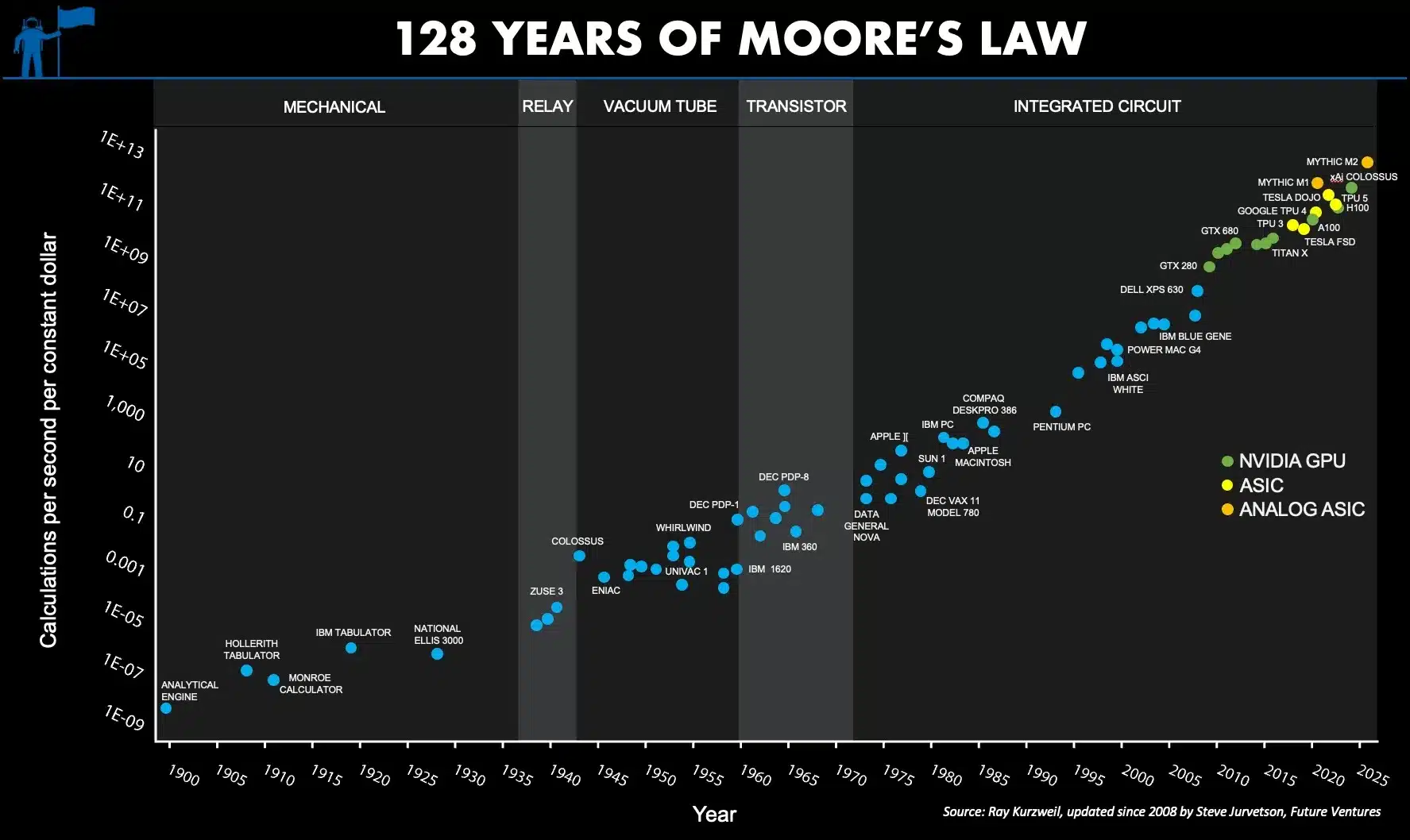
The fundamental graph of technology
The graph’s horizontal axis is linear in years, while its vertical axis is exponential. That is, each annotation represents a factor of 100 in improvement. If the bottom of the axis represented a single grain of sand, the top of the axis would be the number of grains of sand in a thousand beaches.
The graph tells the story of our lives as well as times before, like when the Colossus machine was used by Wrens used to win WW2 with thermionic valves, relays and thyatrons. The blue dots are electronic devices from that point until 2009.
After that year traditional CPUs plateaued, but two new paths emerged: gaming processors (which unexpectedly became powerhouses for AI) and specialized chips like those developed by Google and Tesla. Those devices (green and yellow dots on the graph) can be programmed more or less traditionally, which guarantees them a long and productive future. These devices will manufacture intelligence in the near future.
But look at the very top right-hand corner, where there are two orange dots. These are not the digital devices that power everything today. Instead, these devices are analog – like the brain. More unusually, they are built on ancient (meaning cheap) semiconductor processes. If this trend continues, the future may be faster and stranger than anticipated.
Take-aways for IP lawyers
For intellectual property attorneys, this visualization presents fascinating implications for both patent and trade secret litigation. The graph illustrates not just technological progress, but distinct technological paradigm shifts – from mechanical computing to integrated circuits, and now to specialized AI processors and analog computing devices. Each transition has historically generated waves of high-stakes IP litigation, and the emerging analog computing era promises similar challenges.
The possible pivot toward analog computing devices, shown by those notable orange dots, presents nuanced IP considerations. Unlike traditional digital processors with their well-established patent landscapes, analog AI computing introduces novel questions about patentability and trade secret protection. These devices often rely more on unique architectural and process approaches and specialized training methodologies. This shift could fundamentally alter how we approach IP protection in computing – moving from patents that primarily cover logic manufacturing processes to those protecting analog computing architectures and training methods.
Moreover, the convergence of gaming processors and AI applications (shown in the green dots) has created an interesting precedent for patent attorneys. Technologies originally patented for one purpose but finding revolutionary applications in another field often lead to complex litigation around patent scope and licensing rights. As we see more cross-pollination between consumer gaming technology and advanced AI computing, attorneys should anticipate increased litigation around patent portfolio interpretation and the boundaries of original patent claims.
The rapid acceleration shown in the graph also suggests that traditional patent timelines may become increasingly misaligned with technological progress. By the time a patent is granted, the technology landscape may have shifted dramatically, requiring new strategies for IP protection that combine patents with aggressive trade secret policies, particularly for the analog computing innovations at the cutting edge.
Leave a Reply